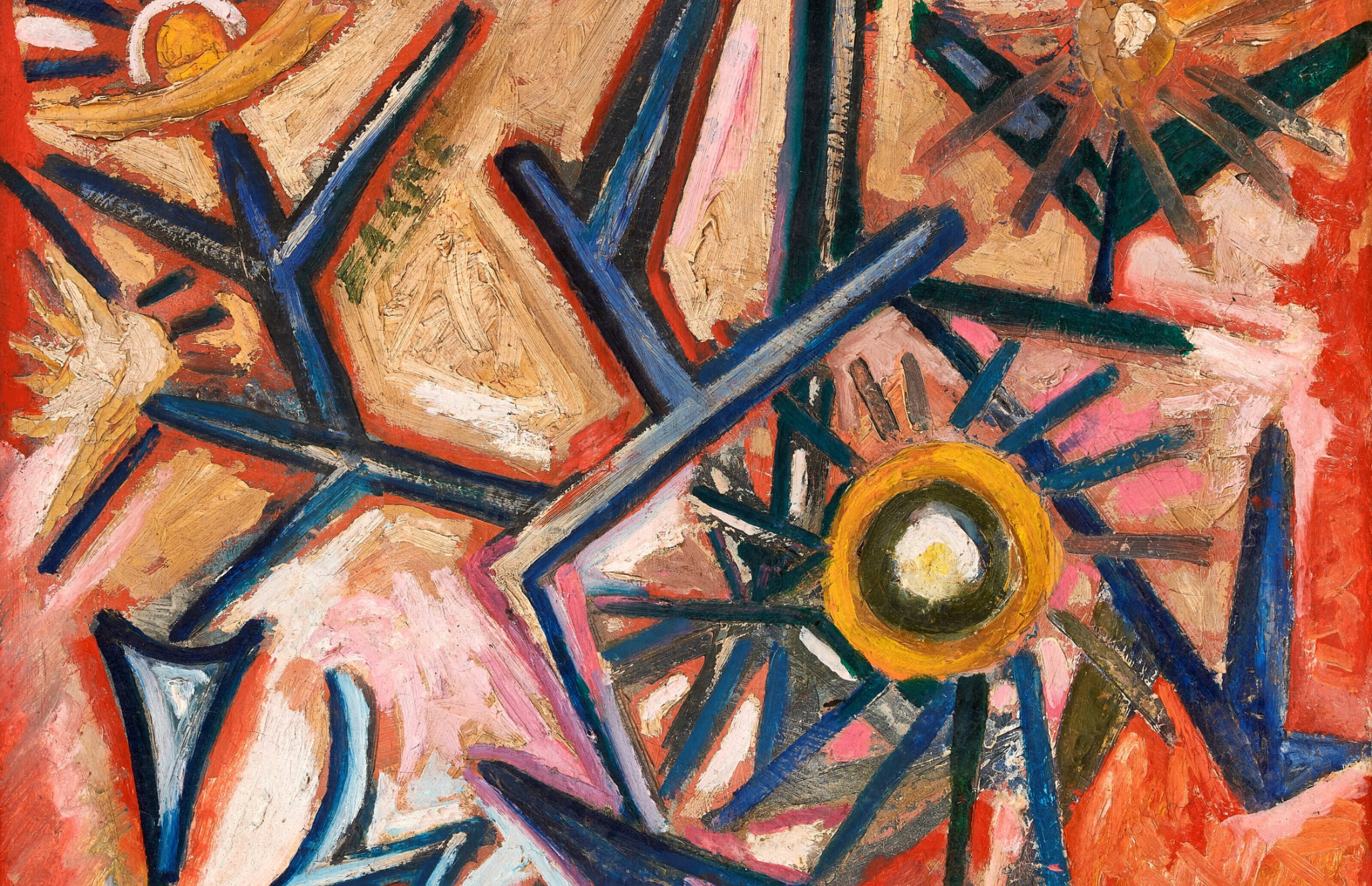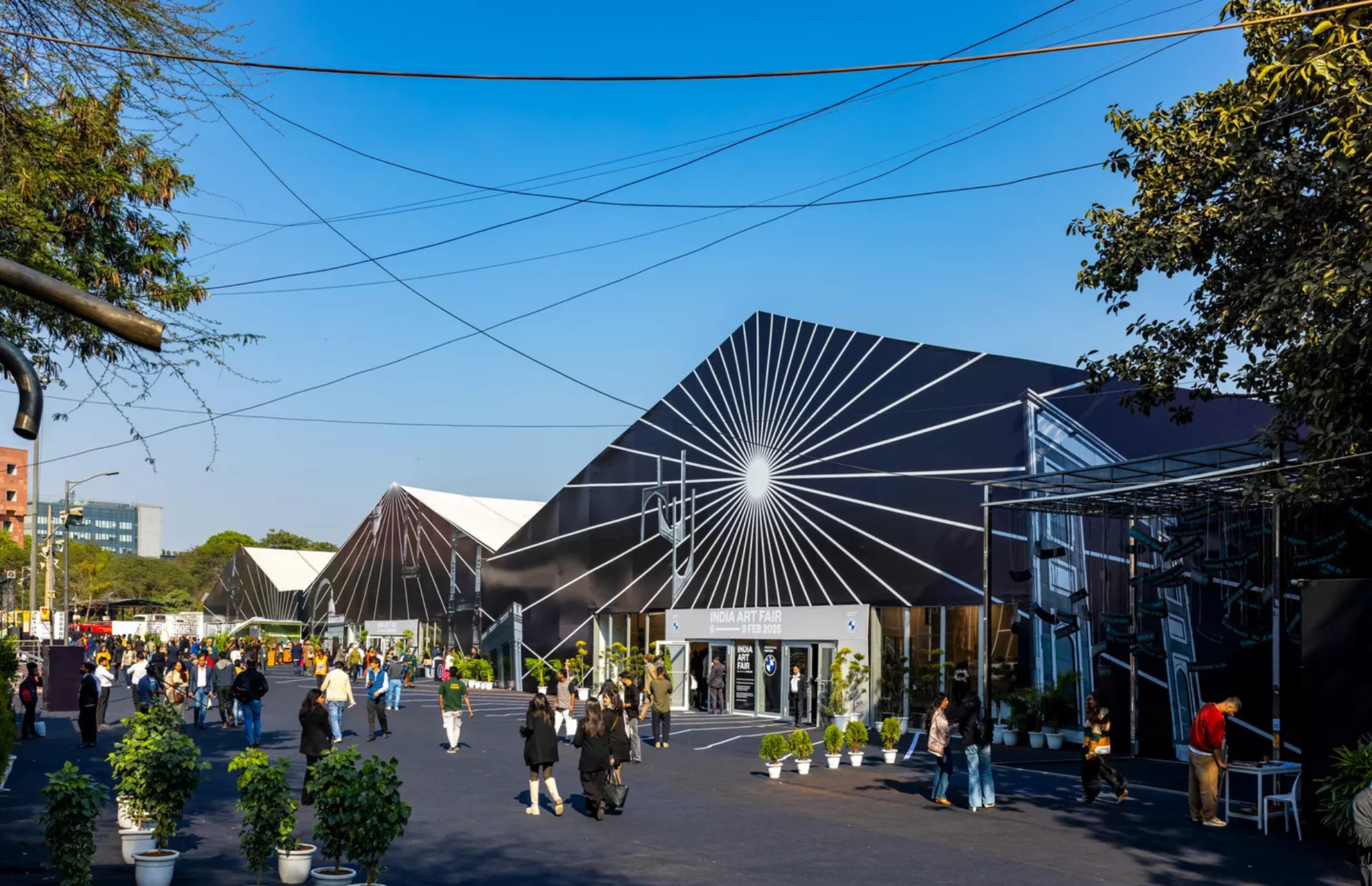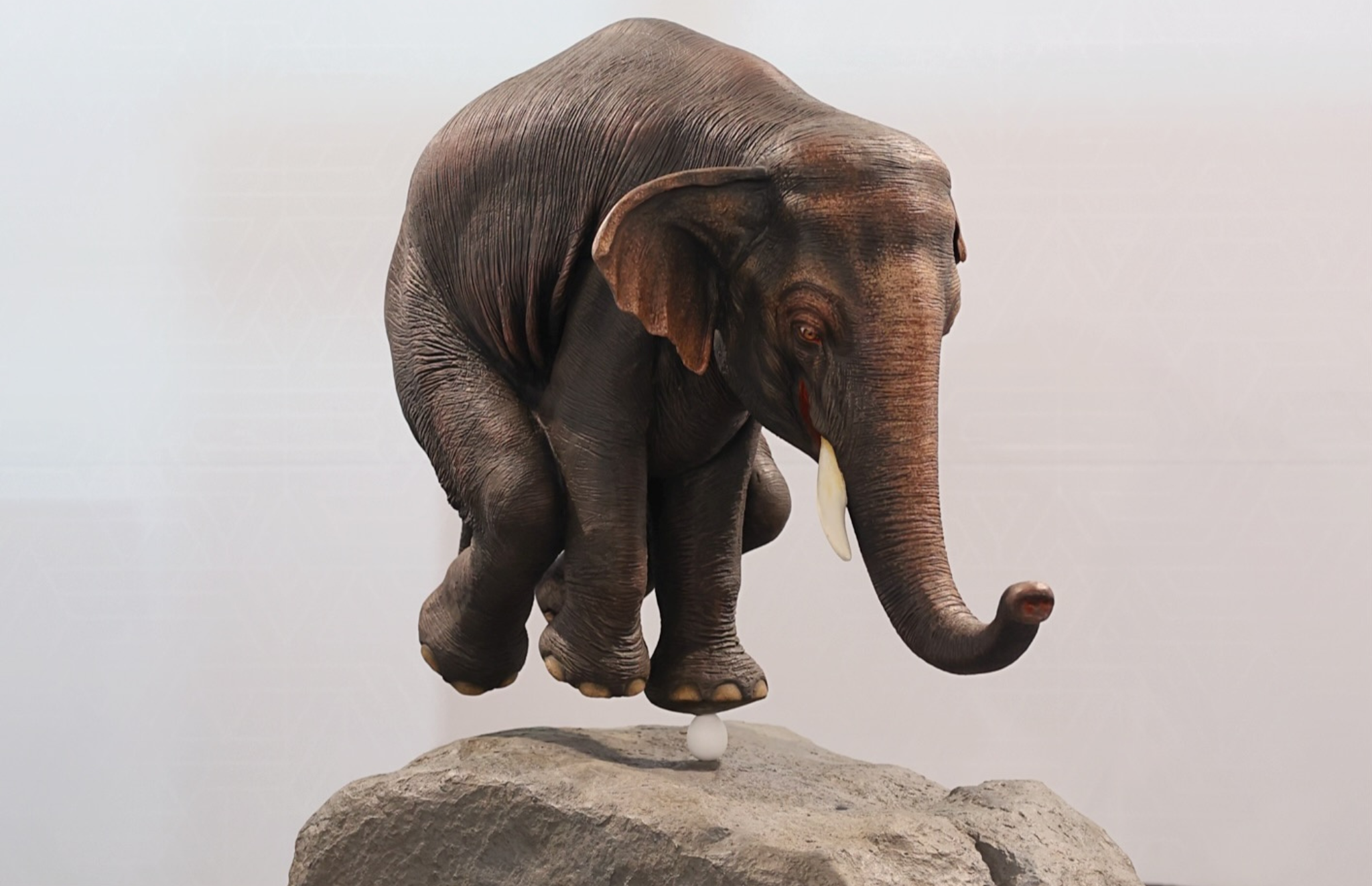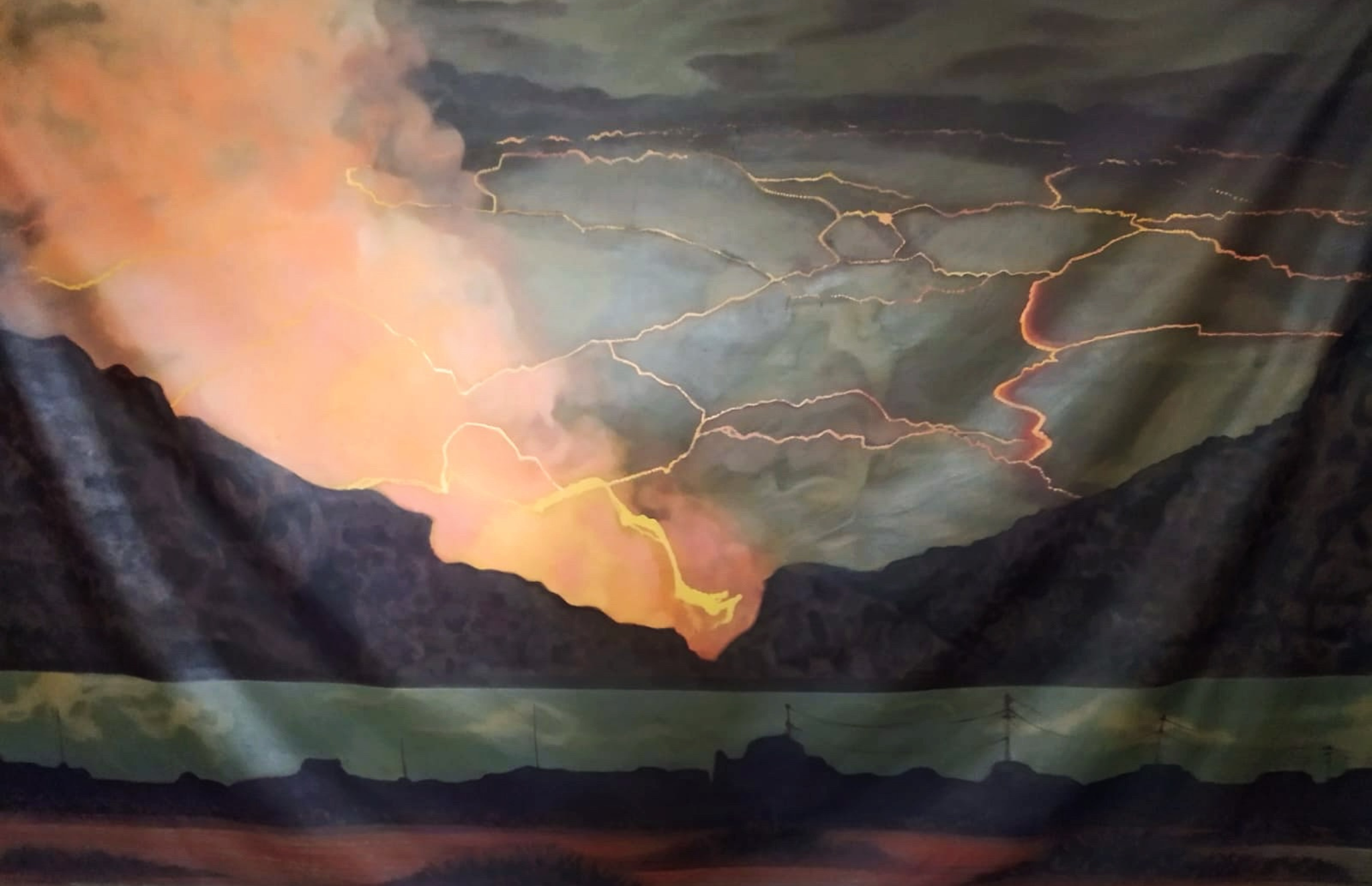Stepping Out at the Fair
We look at some of the India Art Fair Projects that pushed the envelope. The leading platform for Indian Modern and Contemporary Art, showcased art from India and South Asia, rolled out from 9 – 12 February 2023 at the NSIC Exhibition Grounds in New Delhi. With artists’ voices at the core, the fair presented 85 exhibitors, including 71 galleries and 14 institutions. India is set to become the world’s fifth-largest economy, and the expansion of its art market has grown parallelly with the India Art Fair at its helm.

Building on the success of the last edition, the 2023 fair presented one of its most ambitious ventures, with expanded floor-space to showcase South Asia’s talent, spanning cutting-edge contemporary art, modern masters, and an extended Studio presenting the fair’s Digital Artist in Residence programme. The fair is a meeting ground for collectors, curators and art professionals, strengthening cultural dialogue and ties with the international art scene.
The Studio hosted special digital projects supported by the Serendipity Arts Foundation, MASH, The Gujral Foundation and with video and tech-inspired artworks presented by contemporary artists Julien Segard, Ranbir Kaleka, Payal Arya and Aditi Kulkarni respectively; alongside digital animations and drawings by Shrimanti Saha in an interactive public project supported by Foundation for Indian Contemporary Art (FICA).

Sonia Khurana’s Container Project, Don’t touch me when I start to feel safe, (apropos lying- down-on-the-ground…), Lying down and listening to poetry is not an act that one usually associates with the Art Fair, however, Khurana’s project, Container changed that. It brings ‘small acts’ such as lying down, into the public domain. It may gently but pointedly make us rethink norms of social behaviour, and what we associate with the public and the private. The attempt is also to transform public, social spaces in a way that echoes acts of protest and symbolic resistance. Replacing the vertical axis with a horizontal one is an invitation to look through a changed perspective.
Through the traversal of lying-down-on-the-ground project, Khurana has developed a powerful formula for abjection and dereliction, which produces itself as a grammar for being in space, isolation that could be transformed into iconography on the one hand and collective experience, on the other, also incites its own textual form as voice-art,” writes Griselda Pollock, in excerpts from her larger essay. Khurana adds, “Through performative acts, I can engage with the constant struggle between body and language, to achieve a corporeal eloquence.”

Senior artist Ranbir Kaleka’s project Breath, supported by MASH, involved a surround sound digital video work. Set against a bluish backdrop, it focuses on the moving stomachs of different people, while they breathe. Kaleka’s video-work is not just timely, it is also visionary as it foregrounds environmental issues focusing on the most vital element—the air we breathe.
The artwork is the first iteration which articulates the polysemous ‘Breath’. Exploring the myriad practices ranging from Yogic traditions of the yore to the significance of breath during the period of pandemic. It makes us acutely aware of the elements of essentialism that we connect with the idea of breath.
The installation of the bodies of people belonging to different genders and ages, their stomachs moving in and out rhythmically as they gasp for air, speaks directly to the importance of breath and how it’s often important to regulate our breathing, become conscious of it and hence meditate so that we are aware of our body and cognizant of its needs.
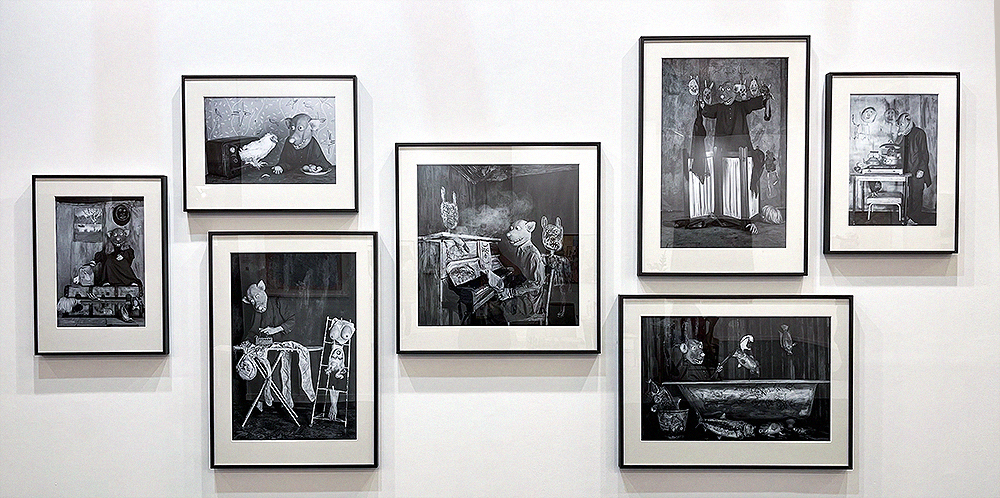
The PHOTOINK booth at India Art Fair, celebrated a century of looking at the world through images. It featured a selection of street photography and pictorialist photographers, from the 1920s alongside the photographers regularly represented by PHOTOINK. One got to look at the works of Roger Ballen, Madhuban Mitra & Manas Bhattacharya, from the Madan Mahatta Archives, Raghu Rai and Ketaki Sheth, The Estate of Ahmed Ali, R.R. Bharadwaj, Yashna Kaul, Farheen Fatima, and Prateek Arora.
Besides the classical B&W street photography that was very typical of the early era up to the 1960s and 70s, one also saw street photographs in colour made with an iPhone, industrial photography, intricately constructed tableaus mixing photography, sculpture, puppetry and drawing, re-photographed images from films, reconfigured and painted vernacular photographs, and images made using AI (Artificial Intelligence) systems in 2022.


Bringing together this entire selection of work of 10 artists, the multifaceted presentation graphs the “changing relationship of images to what we call reality through the course of a long century, bringing us up to a critical juncture where photography’s ontological connection to the physical visible world is in question,” to quote from the written text shared by director-curator of PHOTOINK, Devika Daulat Singh.
Even though the works are diverse, the selections from the work of 10 artists are a testament to the power and fascination of the medium of photography and its ability to take on various guises and continue to morph infinitely with reference to the changing times.

Gallery Espace featured a selection of their artists at their large booth at the India Art Fair, both Modern and Contemporary voices in a sense although, arguably the emphasis was on the Contemporary artists. One noted works by artists Chitra Ganesh, Arunkumar H G, Dilip Chobisa, G R Iranna, and Harendar Kushwaha, besides works by Puneet Kaushik, Manisha Gera Baswani and Zarina Hashmi.


The aesthetic tying the works together of artists like Hashmi, Baswani, Kasushik and Kushwaha is a subtle and underplayed one where the artists employ an abstract metaphor to refer to their mental and emotional states. Going beyond the boundaries of painting they work with pin- pricked paper (Baswani) beaded Columns (Kaushik) and other textured surfaces.

Both Arunkumar and Iranna have a strong concern with the environment, expressed in a sculptural manner with Arunkumar and while Iranna undertakes a painterly approach to expressing himself. Ganesh is entirely different in her approach as she uses the vocabulary of the illustrated comic-epics Amar Chitra Katha to speak of her own poetic narratives. Her queer- feminist concerns address the canons absent from literature and art.
Text by Georgina Maddox
Image Courtesy: Gallery Espace, PHOTOINK, The Gujral Foundation, and MASH India.
Find out more about IAF:
https://indiaartfair.in/

